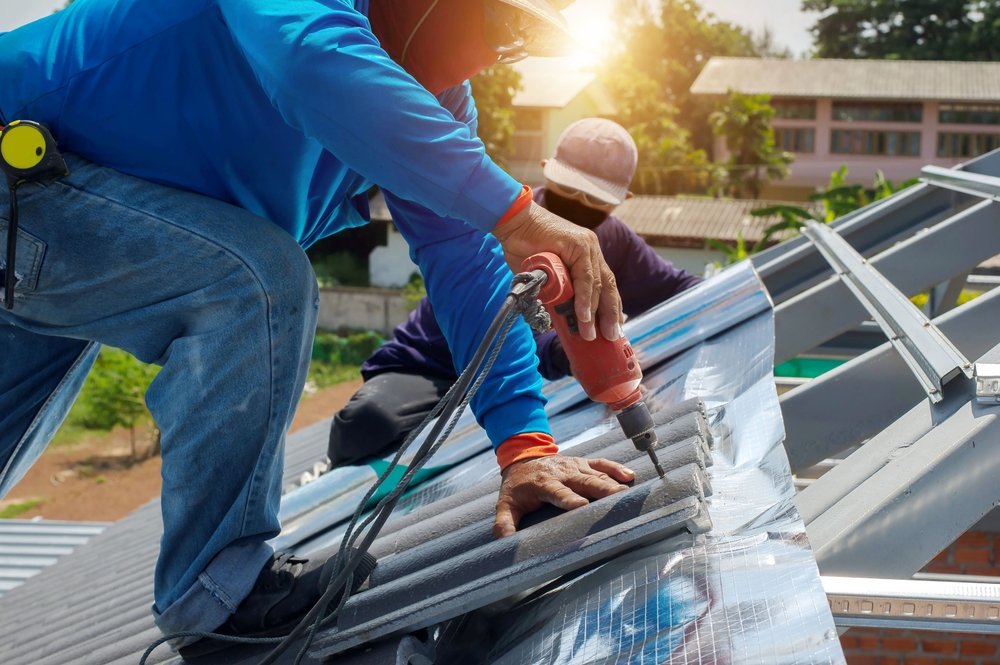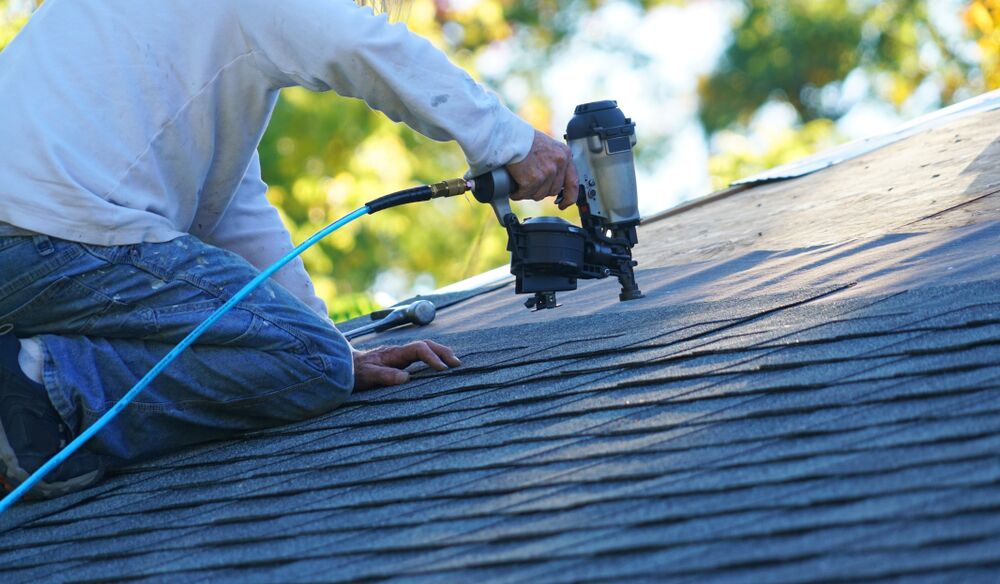Roofing Oahu: High Quality Providers for Durable Roofs in Oahu
Roofing Oahu: High Quality Providers for Durable Roofs in Oahu
Blog Article
Comprehending the Various Kinds Of Roof Coverings: A Comprehensive Overview for Homeowners
With an array of alternatives-- varying from the conventional gable to the contemporary level-- each type presents distinct benefits and difficulties that ought to straighten with the homeowner's particular requirements and environmental factors to consider. As we explore the details of different roof kinds, it ends up being evident that one size does not fit all; the appropriate option might amaze you.
Saddleback Roof
Saddleback roofs, characterized by their triangular form, are among one of the most prominent roof covering styles because of their simplicity and effectiveness in dropping water and snow. This layout includes two sloping sides that meet at a ridge, permitting effective water drainage and reducing the danger of water accumulation. The steep pitch generally connected with gable roof coverings improves their ability to deal with hefty precipitation, making them appropriate for numerous climates.
In enhancement to their practical benefits, gable roofings supply aesthetic convenience. They can be adapted to various architectural designs, from typical to contemporary homes. The style can additionally suit additional features such as dormer home windows, which enhance all-natural light and ventilation in the attic room room.
Moreover, saddleback roofs give adequate area for insulation, adding to power efficiency. House owners can pick from a selection of roofing materials, consisting of asphalt shingles, steel, and tiles, additionally enhancing modification choices.
Regardless of their advantages, saddleback roofs might require additional support in locations susceptible to high winds or hefty snowfall. On the whole, the saddleback roof stays a preferred choice because of its mix of functionality, sturdiness, and visual appeal.
Flat Roofs
Flat roofing systems are commonly recognized for their minimalist layout and practical applications, particularly in industrial and business settings (oahu roofing). These roofs feature a horizontal or almost straight surface area, which permits easy building and functional space usage. While they might do not have the aesthetic charm of angled roofs, level roof coverings use many benefits, specifically in urban environments where making best use of area is crucial
Among the key advantages of flat roofing systems is their accessibility. Homeowners can use the roofing space for numerous functions, such as roof gardens, balconies, or solar panel installments. In addition, flat roofing systems are generally extra affordable to install and preserve contrasted to their sloped counterparts, as they need fewer products and labor.
Nevertheless, level roofs do existing particular challenges. Correct drainage is necessary to prevent water pooling, which can result in leakages and structural damage. For this reason, picking top notch waterproofing products and regular assessments are critical for guaranteeing long life. Typical products used for flat roofings consist of built-up roofing (BUR), changed asphalt, and single-ply membranes, each offering distinct benefits. Generally, flat roofings work as a useful and adaptable selection for many property owners and services alike.
Hip Roofings
Hip roof coverings are characterized by their sloped sides that merge on top, creating a ridge. This style stands out from saddleback roofs, as all 4 sides of a hip roofing slope downwards toward the walls, supplying an extra steady structure. The angle of the slopes can differ, permitting versatility in building visual appeals and capability.
Among the main benefits of hip roofs is their capacity to stand up to heavy winds and adverse climate condition. The sloped surface areas enable much better water drainage, lowering the threat of leakages and water damage. Additionally, hip roofings offer increased attic area, which can be used for storage and even transformed into habitable locations.
Nevertheless, building a hip roofing can be much more complex and costly than easier roof covering types, such as saddleback roofs. The added product and labor associated with producing the inclines and guaranteeing correct structural integrity can cause higher costs. Despite read the article these disadvantages, many homeowners prefer hip roofs for their longevity, visual allure, and potential for energy effectiveness.
Mansard Roofing Systems
Mansard roofing systems, commonly identified by their unique four-sided layout, feature two slopes on each side, with the lower incline being steeper than the top. This architectural style, originating from France in the 17th century, is not just cosmetically appealing but functional, as it makes best use of the usable area in the top floorings of a structure. The steep reduced slope enables even more clearance, making it an excellent option for lofts or attic rooms, which can be exchanged living areas.
Mansard roofings are characterized by their adaptability, suiting different architectural styles, from standard to modern. They can be built with different materials, including asphalt shingles, slate, or steel, giving home owners with a variety of choices to suit their budget plans and choices. In addition, the layout enables for the integration of dormer windows, enhancing all-natural light and air flow in the upper levels.
Nonetheless, it is vital to consider the prospective drawbacks. Mansard roofs may call for more maintenance because of the intricacy of their design, and their steep slopes can be testing for snow and rain drainage. Generally, mansard roofing systems combine elegance with functionality, making them a preferred option amongst property owners seeking unique building attributes.
Dropped Roofing Systems
As homeowners significantly seek simpleness and capability in their go architectural layouts, shed roof coverings have emerged as a preferred choice. Defined by a solitary sloping aircraft, a shed roof covering provides a minimal aesthetic that matches various home designs, from modern to rustic.
One of the main benefits of a shed roof is its simple building, which commonly translates to reduce labor and material prices. This layout permits for effective water drainage, reducing the threat of leaks and water damages. In addition, the vertical incline offers ample area for skylights, improving all-natural light within the interior.
Dropped roof coverings additionally provide adaptability in terms of usage. They can be efficiently incorporated into additions, garages, or exterior frameworks like pavilions and sheds. Furthermore, this roofing style can fit numerous roofing materials, including metal, asphalt roof shingles, and even green roofs, straightening with green campaigns.
Nonetheless, it is vital to think about regional climate problems, as heavy snow loads may necessitate changes to the roof's angle or structure. Overall, shed roof coverings offer a useful and cosmetically her response pleasing choice for house owners looking to make the most of functionality without compromising style.
Conclusion


Gable roofing systems, identified by their triangular form, are amongst the most popular roof covering styles due to their simplicity and efficiency in dropping water and snow. oahu roofing. The steep pitch generally associated with gable roof coverings boosts their capacity to deal with hefty rainfall, making them suitable for different climates
While they might do not have the aesthetic charm of pitched roofings, level roofing systems supply many advantages, specifically in metropolitan atmospheres where taking full advantage of area is essential.

Report this page